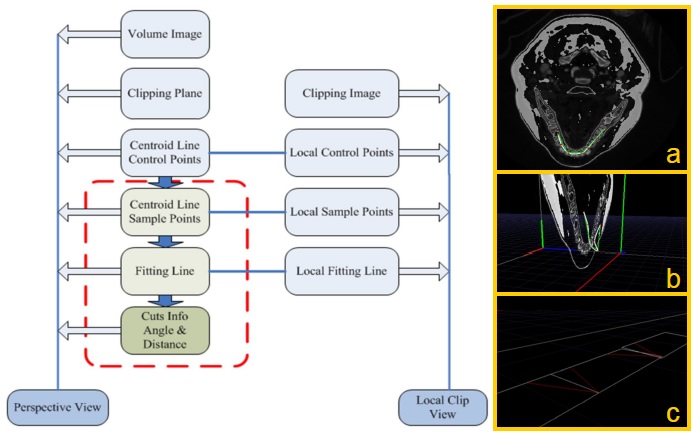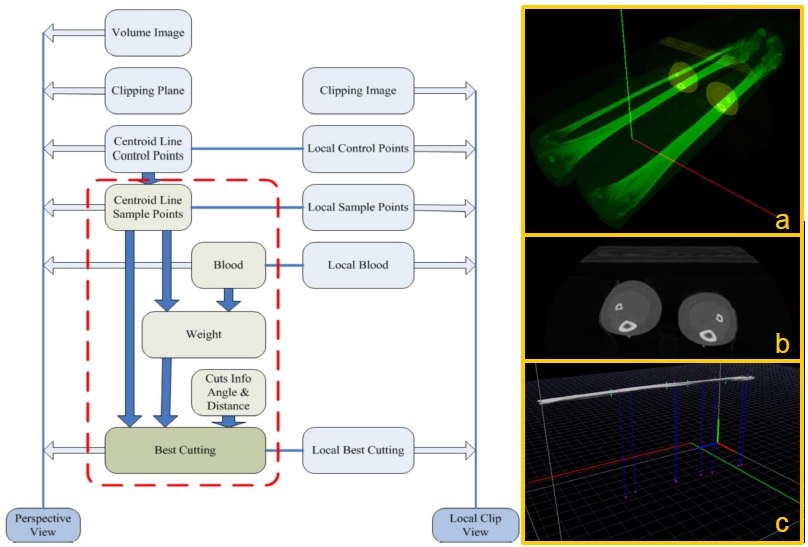Computer-Based Planning System for Mandibular Reconstruction Surgery
Tumors that involve the oral cavity, can arise from the tongue, floor of the mouth, lips, and hard palate, among other structures. Advanced tumors can be quite destructive and invade the mandible (lower jaw) or maxilla (upper jaw). Affected segments of the mandible or maxilla are then removed surgically. The standard of care for bony reconstruction of mandibular and maxillary defects involves use of the fibula free flap. The fibula bone is harvested and brought up into the neck with its attached pedicle, the peroneal artery and vein. The peroneal artery and vein are then anastomosed to donor arteries and veins in the neck and the reconstructed bone segment is plated into place. Dental implants can then be placed into the reconstructed mandible at a later time to provide for dental rehabilitation. Depending on the type of defect that is created, wedges of the fibula may need to be osteotomized in the horizontal and/or vertical dimensions to re-create the normal shape of the native patient's mandible. Additionally, skin overlying the lateral aspect of the leg is also harvested along with the fibula if needed. This skin is supplied by 2-3 sub-millimeter perforator vessels coming off the peroneal artery and vein just posterior to the fibula at different points along the length of the peroneal vessels. For these composite defects, osteotomies need to be performed without damaging the perforator vessels to the skin, which are usually not visualized well during the dissection.


Ideally the wedge osteotomies are performed in a segment of the fibula bone which is away from the perforator vessels in order to prevent inadvertent injury. Historically after mandibulectomy, for large defects requiring fibular free flaps, the reconstructive surgeon created a mental three-dimensional (3D) picture in his/her mind, and reconstructed the defect without the use of pre-operative templates or guides. Pre-operative planning is crucial to this kind of surgery. Optimizing the surgery parameters is also needed.
Participants: Manal Aassaf, Wei Li, Arjun Joshi, James Hahn [Published Paper]

